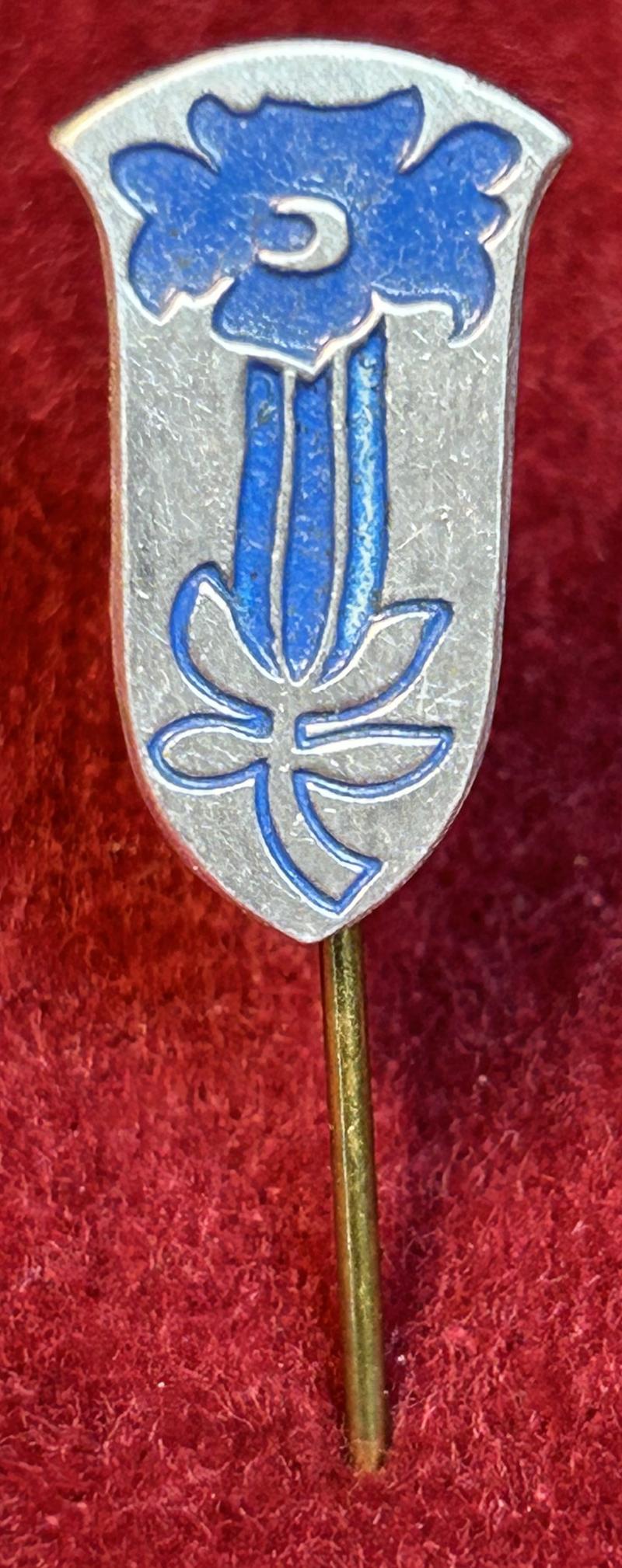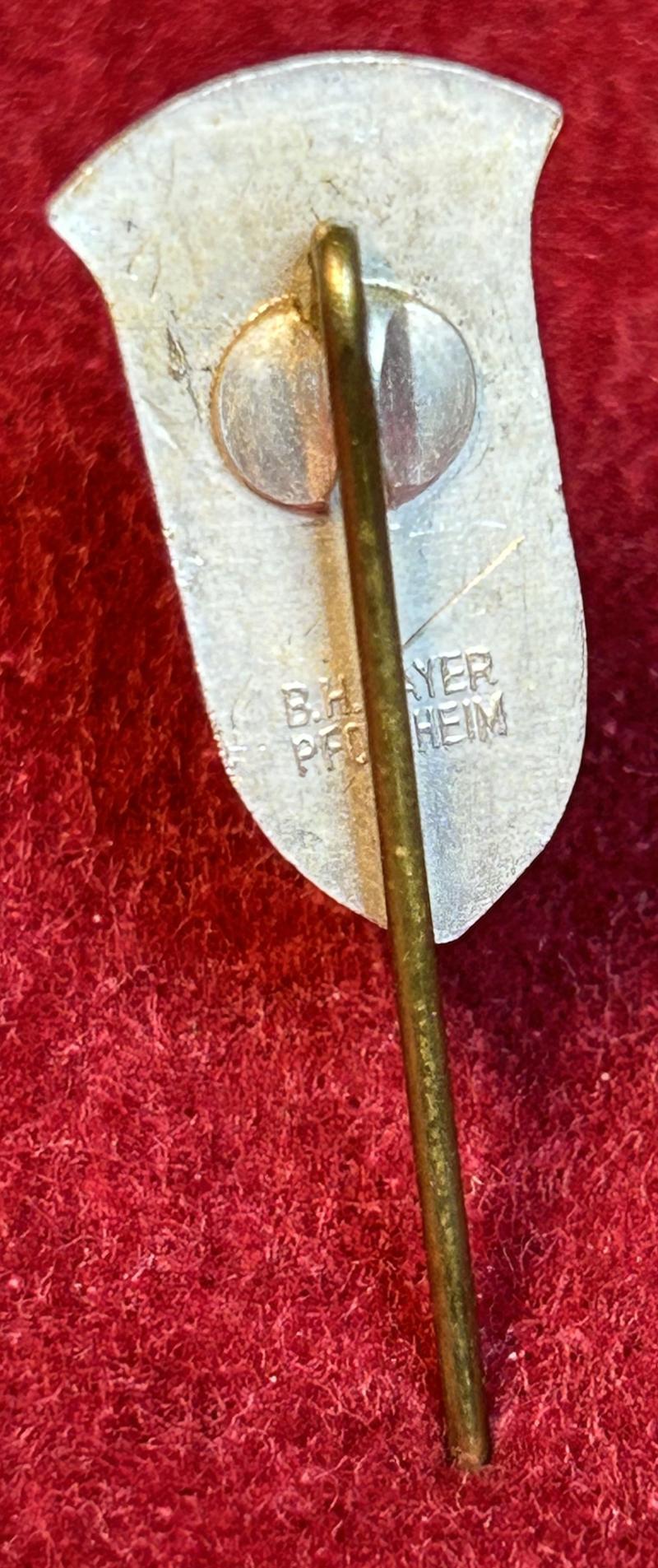3rd Reich Divisionsabzeichen der 4. Gebirgs-Division der Wehrmacht (B.H.Mayer)
In an excellent condition a Division Badge of the 4th Mountain Division of the Wehrmacht (B.H.Mayer)
Maker marked B.H.Mayer from Pforzheim
These division badges were also called Traditionsabzeichen or Truppenkennzeichen.
The division was set up from October 23, 1940 to mid-March 1941, mainly through donations from the 25th and 27th Infantry Divisions at the Heuberg military training area. In the same year, the association was relocated to Bulgaria and took part in the 1941 Balkan campaign from there. The division advanced in Serbia in the direction of Pirot and was followed by advance battles via Knjaževac on Kruševac and deployment as an occupation force in the area south-east of Belgrade.
After the Balkan campaign, the division was transferred to the Eastern Front. It pushed through Lemberg, the Brzezany area, over the Sereth through the Stalin Line at Derashnje and was used to capture Vinnitsa. Other battles included participation in the Uman Pocket Battle in the Podwyssokoje area, the advance to the Dnieper and pursuit battles east of the Dnieper, defensive battles at Malaya-Belosjorka, on the Sea of Azov in the Mogila-Tokmak area, the capture of Stalino, the pursuit across the Mius.
In 1942 defensive battles followed in the Donets area, in the Mius position, breakthrough on the Mius and Battle of Rostov-Bataisk, pursuit battles to the Kuban and advance to the high passes of the Caucasus, alternating offensive and defensive battles in the High and West Caucasus (on 21 th August, parts of the division conquered the 5,642 m high Elbrus with high-mountain infantrymen of the 1st mountain division. On August 23, 1942, mountain infantry under Colonel Stettner from Mountain Infantry Regiment 91 took the Adsapsch Pass without a fight and a little later conquered the Santscharo Pass, four kilometers to the south-east. From these passes, on August 26, 1942, the Germans occupied the village of Pschu. On the morning of August 27, 1942, the regiment immediately resumed the advance towards Sukhumi. At around 11:00 a.m., a battalion established itself on Pass 1600, the last pass before the coastal plain, and met growing resistance there. The German advance was over. It had reached its southernmost point in Georgia, 23 kilometers off the Black Sea coast at Gudauta. On September 7th and 8th, 1942, the Germans had to retreat to the passes of the main Caucasus ridge.
In 1943 the retreat to the Kuban began, offensive and defensive battles alternated in the beachhead south of Novorossiysk, west of Melitopol and in the Cherson bridgehead. In the next year there were offensive and defensive battles in the Vinnitsa area, relief attacks for the Cherkasy pocket, defensive battles in the area north of Uman, retreat to the Dniester, defensive battles east of Kishinev, offensive and defensive battles in the Forest Carpathians. The division then withdrew from the Szekler tip to the Ungvar area. In December he took part in the defensive battle in the Pelsöc/Rosenau area.
Now the division, weakened by losses, was only listed as a "combat group" in the overviews of the OKH. This was followed by defensive battles in the High Tatras, the retreat to Upper Silesia (from April 12, 1945) and participation in the Battle of Troppau. Then the division withdrew fighting north-east of Brünn beyond the March. After the successful breakout from the Soviet pocket near Olomouc, further withdrawal failed because the Americans prevented the crossing of the Vltava. When the division surrendered, most of the division was taken prisoner by the Soviets.
Code: 52692





